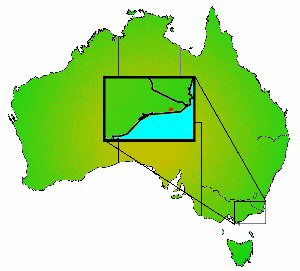East Gippsland galaxias facts for kids
Quick facts for kids East Gippsland galaxias |
|
|---|---|
| Conservation status | |
| Scientific classification | |
| Kingdom: | |
| Phylum: | |
| Class: | |
| Order: |
Osmeriformes
|
| Family: | |
| Subfamily: | |
| Genus: |
Galaxias
|
| Species: |
G. aequipinnis
|
| Binomial name | |
| Galaxias aequipinnis Raadik, 2014
|
|
The East Gippsland galaxias (scientific name: Galaxias aequipinnis) is a small freshwater fish. It belongs to a group of fish called Galaxias. This fish is part of the "Mountain Galaxias" family. You can find it living in fresh water in Australia.
Contents
About the East Gippsland Galaxias
What Does It Look Like?
The East Gippsland galaxias has a long, tube-shaped body. It can grow up to about 11 centimeters (4.3 inches) long. Most of these fish are usually around 7 to 8 centimeters (2.7 to 3.1 inches) long.
This fish has a long head and snout. Its lower jaw is a bit shorter than its upper jaw. Its body is brown on top, especially on its head and snout. The color gets lighter, turning creamy on its lower sides. Its belly is a shiny silvery-white. You might also see dark, uneven stripes or marks on its sides.
Where Does It Live?
The East Gippsland galaxias lives in a very small area. It has only been found in a few specific rivers in East Gippsland, Australia. These rivers are the Arte River and the Little Arte River. They are part of the Goolengook River system, which flows into the Bemm River. These fish live at high places, about 250 to 390 meters (820 to 1,280 feet) above sea level.
What Kind of Home Does It Like?
This fish prefers small to medium-sized freshwater streams. These streams are usually about 1.5 to 6 meters (5 to 20 feet) wide. The water is not very deep, only about 15 to 40 centimeters (6 to 16 inches) deep.
The streams are often surrounded by lots of plants and trees. The water is cool and clear, sometimes a little bit stained brown from natural plant material. The bottom of these streams is mostly solid rock. There are also bigger rocks and smaller, rounded stones. You might find small amounts of gravel, coarse sand, and some silty areas too. The fish like places with lots of rocks, overhanging plants, and fallen wood for shelter. There are only a few water plants growing in the streams themselves.
How Does It Reproduce?
The East Gippsland galaxias is a purely freshwater fish. This means it spends its whole life in rivers and streams. Unlike some other fish in its family, it does not travel to the sea to reproduce.
Scientists have found male and female fish ready to lay eggs in late May. However, they have also found some young fish in May. This suggests that some fish might lay their eggs later in the year, possibly around November or December.
Why Is This Fish Important to Humans?
This fish is very special and is completely protected by law. It is listed under the Victorian Flora and Fauna Guarantee Act in Australia. This means it is against the law to catch or harm them. People are not allowed to fish for the East Gippsland galaxias. This protection helps to keep this unique fish safe in its natural home.



